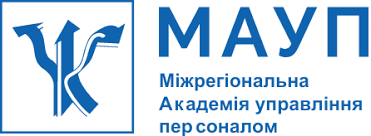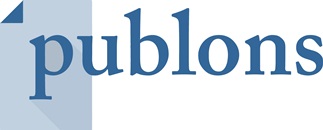COMPARATIVE ANALYSIS OF READINESS FOR INCLUSIVE EDUCATION ON THE EXAMPLE OF TWO UNIVERSITIES IN UKRAINE AND THE REPUBLIC OF POLAND
DOI:
https://doi.org/10.32689/2663-0672-2025-1-23Keywords:
people with disabilities, educational institutions, medical (pharmaceutical education), educational services, material and technical supportAbstract
In Ukraine, due to martial law, inclusive education and the creation of a barrier-free space for people with disabilities are taking on a new meaning. Purpose. To study the European experience and conduct a comparative analysis of the provision of educational services to people with disabilities (PD) by two higher education institutions: a domestic University and a University of an EU country. Methods and materials. The comparative analysis method was applied to ensure the readiness of the provision of educational services to PD on the materials we collected from the documents of the National University «Lviv Polytechnic» (NULP) (Ukraine) and the University of Opole (Republic of Poland). Storage of information on the organization of inclusive education is carried out within the framework of the GoodPharma project. The materials used were data from the PD Resource Center, the Lviv City Organization of the Ukrainian Society of the Deaf, the Galician Pharmaceutical Association (Lviv), the Lviv branch of the All- Ukrainian Association of Sign Language Interpreters and People with Disabilities. Results and discussion. The National Strategy for the Creation of Barrier-Free Space in Ukraine for the Period Until 2030 is reviewed, which is oriented towards international documents, in particular for the implementation of the right to education. It has been established that free access to the infrastructure of higher education institutions is a basic condition for the inclusion of people with disabilities in the educational process. Standards for the accessibility of buildings have been developed in individual EU countries, in particular in the Republic of Poland and Ukraine. A comparative analysis of these documents allows us to establish that they concern the arrangement of parking spaces for vehicles for people with disabilities, their dimensions, ease of exit, and marking. Requirements are also put forward for buildings: the equipment of ramps, special lifts, tactile floor tiles, information tables and the well-known Braille font, audio guides for people with visual impairments, duplication of important audio information with texts, organization of sign language interpretation, use of a sound amplification system for people with hearing impairments, etc. These standards are mandatory and are implemented at both the University of Opole and the Polish National University of Physical Education. It has been proven that physical accessibility is the first component of the inclusion of people with disabilities in the life of the University, and the second component is ensuring inclusion in learning, teaching, participation in self-government, scientific and research work, etc. Special units have been created at the Polish National University of Physical Education: the International Center for Professional Partnership «Integration» (ICPP), the Center for Veteran Development (CVR), the inclusive space «Without Limits», the Resource Center for Educational Technologies. Conclusions. A comparative analysis of the organization of the provision of educational services for people with disabilities in two higher education institutions of Ukraine and the Republic of Poland confirmed the possibility of further studying the European experience of creating a barrier-free environment and ensuring the readiness to provide educational services.
References
ДБН В.2.2-40:2018. Інклюзивність будівель і споруд. Зі зміною №1. Дійсний з 01.09.2022. Державні будівельні норми України. URL: https://dbn.co.ua/load/normativy/dbn/dbn_v_2_2_40/1-1-0-1832 (дата звернення: 18.04.2025).
Звіт зі сталого розвитку Львівської політехніки 2022. URL: https://lpnu.ua/sites/default/files/2023/10/25/paragraphs/53643/zvit-zi-stalogo-rozvitku-2022.pdf (дата звернення: 10.04.2025).
Матеріали до звіту ректора Національного університету «Львівська політехніка» Ю. Я. Бобала на Конференції трудового колективу 30 січня 2025 р. URL: https://lpnu.ua/rektor/zvit-rektora-za-2024-r-konferentsiia-trudovohokolektyvu-30-sichnia-2025-r (дата звернення: 10.04.2025).
Методичні рекомендації щодо запровадження безбар'єрності освітніх послуг у закладах вищої освіти. Про методичні рекомендації. Лист МОН № 6/688-24 від 04.09.24 року. URL: https://osvita.ua/doc/files/news/929/92946/66d8500f5d232894940546_3.pdf (дата звернення: 10.04.2025).
Найбільше людей з інвалідністю зареєстровано у Львівській області, а найбільше працюють – у Києві. Опубл. 24.06.2024. Конфедерація роботодавців України. URL: https://employers.org.ua/en/page_1.htm (дата звернення: 10.04.2025).
Потимко О.З. Українська модель інклюзивної освіти незрячої дитини: система цінностей і компетентностей. / Восьмий міжнародний форум «Інноватика в сучасній освіті 2016». - Л.-К., 2016 - 35 с.
Про вищу освіту: Закон України від 01.07.2014 №.1556-VII. станом на 09.04.2025. URL: https://zakon.rada.gov.ua/laws/show/1556-18#Text (дата звернення: 10.04.2025).
Про внесення змін до деяких законодавчих актів України щодо забезпечення права осіб з інвалідністю на працю: Закон України від 15.01.2025 № 4219-IX. URL: https://zakon.rada.gov.ua/laws/show/4219-20#Text (дата звернення: 10.04.2025).
Про схвалення Національної стратегії із створення безбар'єрного простору в Україні на період до 2030 року: Розпорядж. Каб. Міністрів України від 14.04.2021 №366-р: станом на 25.03.2025. URL:https://zakon.rada.gov.ua/laws/show/366-2021-р#Text (дата звернення: 10.04.2025).
Accessibility of Cultural Heritage Sites for People with Disabilities: A Case Study on Krakow Museums. / Kruczek Z., Gmyrek K., Ziżka D., Korbiel K., Nowak K. Sustainability. 2024. 16(1), P. 318. DOI:10.3390/su16010318
Gomda A., Sulemana N., Zakaria H. Access to Education for Persons with Disabilities in Ghana: A Review. Environmental Sciences Proceedings. 2022. Vol. 15, No. 1. P. 50. DOI: 10.3390/environsciproc2022015050
Good solutions for gaps in Pharmacy: in line with European priorities. Active projects. Lviv Polytechnic National University. URL: https://lpnu.ua/en/goodpharma (date of access: 10.04.2025).
Ihnatenko K., Shorena S. Barriers to Social Service Access for Ukrainian Refugees with Disabilities in Georgia: Outreach and Communication. Social Sciences. 2025. 14, No. 2: P. 95. DOI:10.3390/socsci14020095
Lviv Polytechnic National University. URL: https://lpnu.ua/en (date of access: 10.04.2025).
Development of Inclusive Education Learning Design in the Era of Society 5.0 / Mansur H. et al. Social Sciences. 2023. Vol. 12, no. 1. P. 35. DOI: 10.3390/socsci12010035
Providing equitable care for persons with disabilities. / Wakeham S. et al. Can Pharm J (Ott). 2017. 150, No. 4. P. 251–258. DOI: 10.1177/1715163517710957.
Rozporządzenie Ministra Edukacji Narodowej i Sportu z dnia 21 stycznia 2005 r. w sprawie podstaw programowych kształcenia w zawodach: asystentka stomatologiczna, dietetyk, higienistka stomatologiczna, opiekunka dziecięca, ortoptystka, protetyk słuchu, ratownik medyczny, technik dentystyczny, technik elektroniki medycznej, technik elektroradiolog, technik farmaceutyczny, technik masażysta, technik ortopeda i terapeuta zajęciowy. URL: https://isap.sejm.gov.pl/isap.nsf/DocDetails.xsp?id=wdu20050260217 (date of access: 10.04.2025).
Standardy dostępności budynków dla niepełnosprawnych. Standardy Dostępności Budynków. Ministerstwo Rozwoju i Technologii. 2017. URL: https://www.gov.pl/web/rozwoj-technologia/standardy-dostepnosci-budynkow-dla-osob-zniepelnosprawnosciami(date of access: 10.04.2025).
The war in Ukraine: impact on persons with disabilities. European Disability Forum. Publ. 02/25/2025. URL: https://www.edf-feph.org/the-war-in-ukraine-impact-on-persons-with-disabilities/ (date of access: 10.04.2025).
Tiasakul S., Abdulzaher R., Bazan C. Accessibility of Entrepreneurship Training Programs for Individuals with Disabilities: A Literature Review. Administrative Sciences. 2024. Vol. 14, no. 8. P. 187. URL: https://doi.org/10.3390/admsci14080187 (date of access: 11.04.2025).
Union of equality – Strategy for the rights of persons with disabilities 2021-2030. European Commission: Directorate-General for Employment, Social Affairs and Inclusion. Publications Office, 2021. URL: https://data.europa.eu/doi/10.2767/31633 (date of access: 10.04.2025).
Uniwersytet Opolski (UO). URL: https://uni.opole.pl/(date of access: 10.04.2025).
Walawender P., Liszka D., Szczygieł E. “What I Want versus What I Will Agree to”—An Analysis of the Views of Ukrainian Refugees toward Work. Social Sciences. 2024. 13(1), 14. DOI:10.3390/socsci13010014
Wolbring G., Rochelle D Health Equity and Health Inequity of Disabled People: A Scoping Review. Sustainability. 2024. No.16. 7143. DOI:10.3390/su16167143










